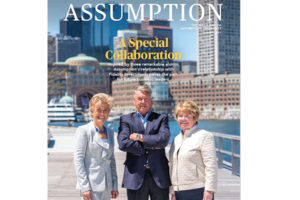
Imagine being a parent of a nonverbal child with autism and wanting nothing more than to communicate with your child, to know his/her thoughts, hopes, and dreams. Imagine, too, there was a therapy that unlocked those lines of communication. Decades ago, “facilitated communication” (FC) was thought to be that therapy.
Autism is a neurodevelopmental disorder characterized by impairments in social interaction and communication, and excesses of repetitive behaviors. The type, number, and severity of symptoms vary widely across individuals, who also vary in their need for treatment.
Finding reliable information on effective autism therapy is daunting because autism has long been a fad-therapy magnet. Fad therapies promise unbelievable results and quickly gain popularity, often before they are subjected to review by the scientific community. Over time, the “therapy” undergoes rigorous testing. At that point, it is either shown to be efficacious and becomes part of accepted practice or, more often, proved ineffective and its use declines. Examples of fad autism “therapies” include chelation therapy and hyperbaric oxygen treatments.
FC was developed for people with cerebral palsy but became popular as a communication therapy for autism in the 1990s. In this method, a facilitator helps the FC user control motor movements by holding the user’s hand or arm while he/she points to (types) letters on a keyboard to communicate. FC seemed to break the barriers that prevented those with autism from expressing their thoughts and desires. FC output was astounding; people initially thought to be lacking language skills were writing essays and solving complicated mathematical problems. Success stories were profiled in the media, and FC use spread worldwide. However, by the end of the 1990s, rigorous scientific investigations had demonstrated that facilitators, not FC users, were (unknowingly) creating the “communications”; use of FC as a communication therapy was discredited.
The harm perpetuated by fad therapies is just as astounding as the miracles they promise. They provide false hope. They waste resources and time that could be spent in meaningful therapy. They sometimes tear families apart; for example, FC user “communications” included numerous accounts of sexual abuse that were later determined to have been originated by the facilitators rather than by FC users.
Given the widespread condemnation of FC by the scientific community and the serious harm it has caused, it is shocking that its use continues nearly 20 years after its debunking. Popular books, online reports, and television documentaries still tout FC successes based on anecdotal evidence, and training workshops are still offered. FC continues to be used as a therapy, and reports of abuse continue.
It is essential that programs train aspiring clinicians not only on how to deliver evidence-based autism interventions, such as those based on applied behavior analysis (ABA), but also on how to avoid fad therapies. The undergraduate and graduate ABA programs at Assumption teach students how to recognize the characteristics of evidence-based interventions and understand the underlying behavioral principles that support them. Understanding the science of behavior is the first step in creating a generation of clinicians who are able to resist the temptation of fad and potentially damaging therapies.


